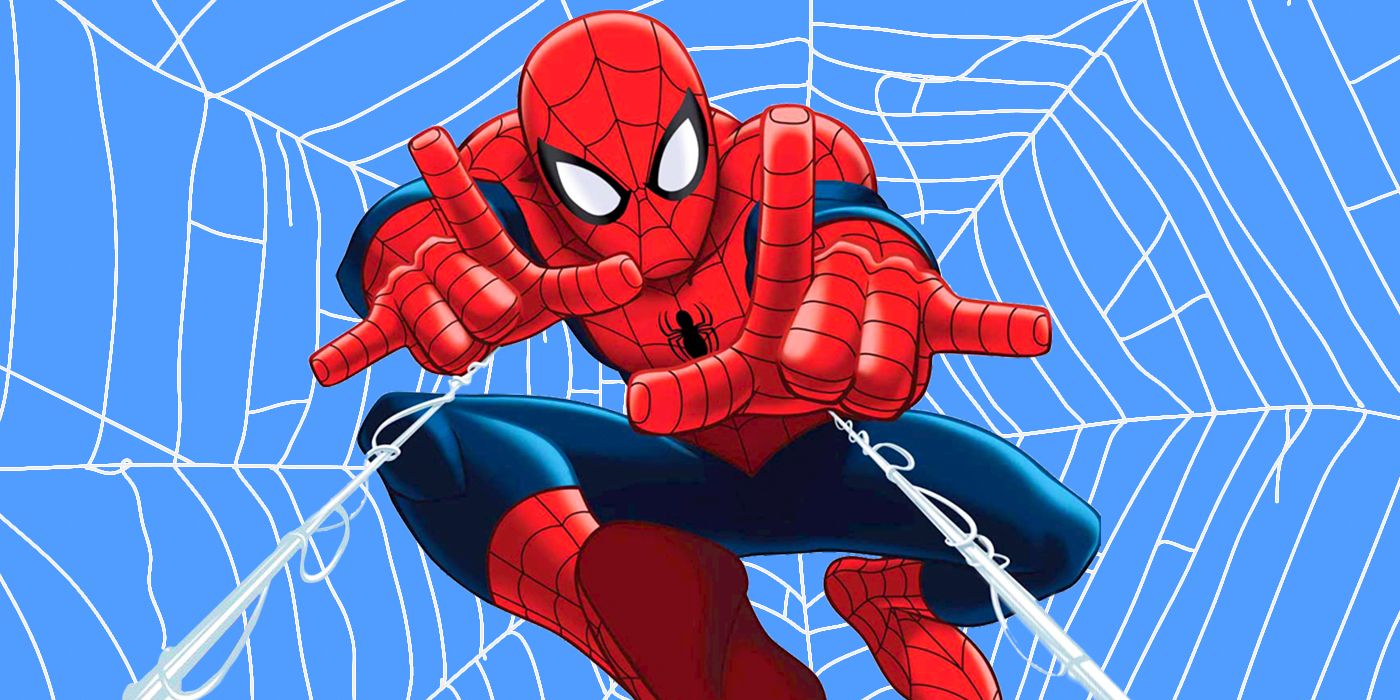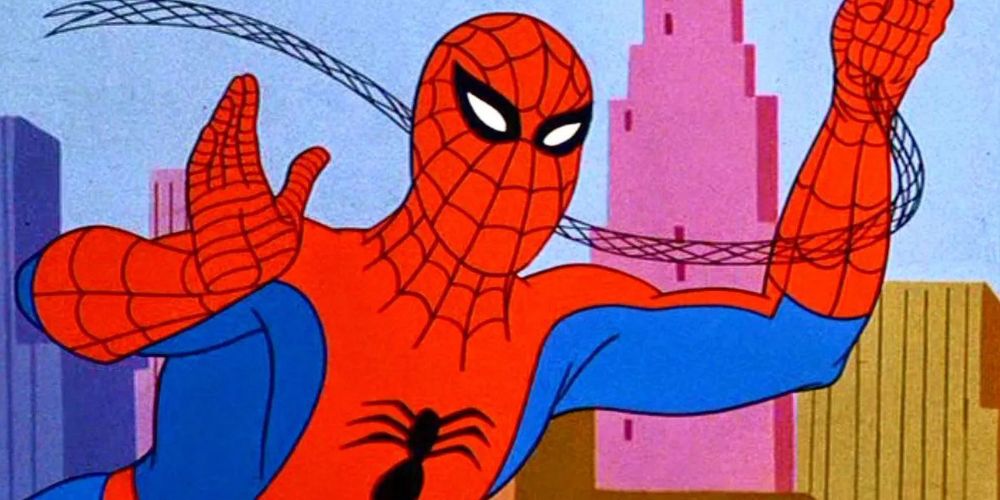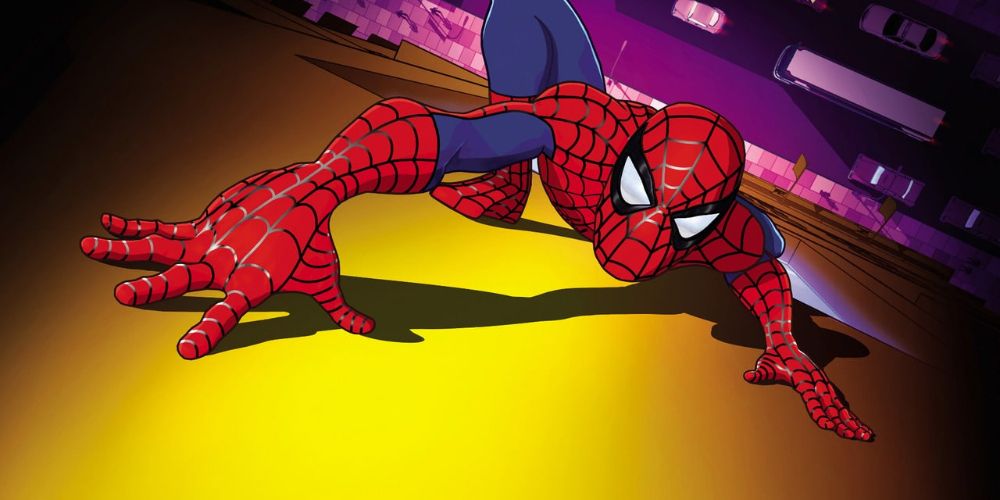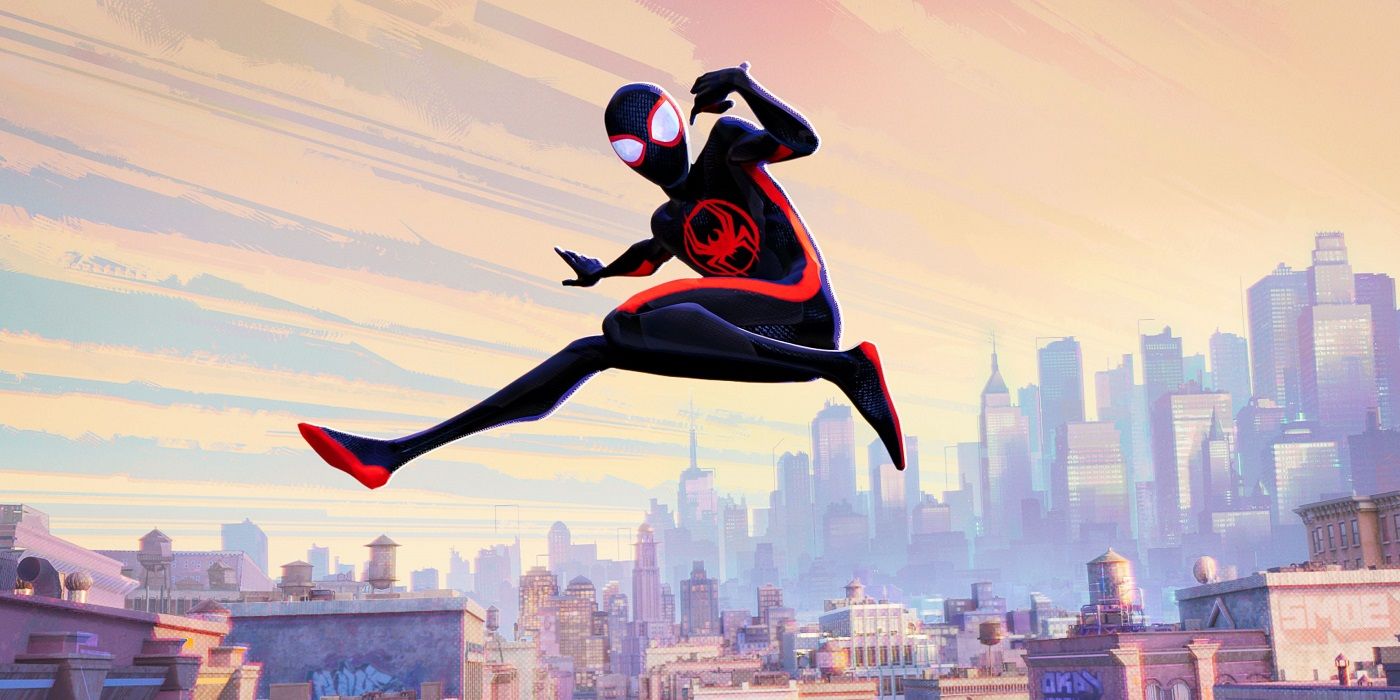Across the vast annals of comic book history, Spider-Man is one of the medium's most pronounced and delightful heroes. Created by virtuosos Stan Lee and Steve Ditko, Peter Parker exploded onto the scene when the Silver Age of Comics (1956-1970) was at its height. The Silver Age was an era marked by superhero stories enjoying their highest mainstream popularity to date following World War II in tandem with comic creatives elevating the art form. Writers like Lee crafted heroes who were relatable, flawed, and aligned with the counter-cultural movements of the 1960s. Master illustrators and inkers like Ditko and Jim Steranko designed avant-garde costumes, panels, and spreads as cinematic as anything on a movie screen. The Silver Age epitomized innovation, cleverness, and artistic progression, and Spider-Man epitomized the Silver Age. He was a visual like no other: a whip-fast contortionist made up of red and blue lines, defying the laws of physics as he swung through the New York skyline.
Pair that tumultuous energy with animation, and you have the perfect match. Both mediums are drawn, one just happens to be actively moving. Both are wildly imaginative — as a rule, animation allows for more creative freedom in style, atmosphere, and tone than anything the biggest blockbuster can concoct. There's no denying that watching a live-action Peter Parker web his way around remains a thrill, but from his earliest cartoon days through to the upcoming Spider-Man: Across the Spider-Verse, an animated Spider-Man is in a class of his own.
Spider-Man Has Always Excelled as a Cartoon
Aside from the 1960s live-action Batman series and some scattered films that were (mostly) poorly made, it was normal for comic book characters to migrate into animation decades before they graced a theater screen. Peter Parker and his Spider-Friends might have the honor of "most cartoon adaptations": there's the original series from 1967 (which contributed that iconic, chipper theme), the 1981 series of the same name, Spider-Woman, Spider-Man & His Amazing Friends, Spider-Man: The Animated Series, Spider-Man Unlimited, Spider-Man: The New Animated Series, Spectacular Spider-Man, Ultimate Spider-Man, Marvel's Spider-Man, the ongoing Spidey and His Amazing Friends, and the upcoming Spider-Man: Freshman Year.
Still with me? Spider-Man's undeniable popularity certainly contributed to that many adaptations in quick succession — notoriety that Sam Raimi's Spider-Man movie trilogy elevated into worldwide awareness. But perhaps there's something inherent to Spider-Man in particular that makes his world better suited to animation's unique expertise.
Even die-hard fans who grew up on the older Spider-Man cartoons will tell you they unfortunately suffer from their era's budgetary restrictions. Scenes are dominated by stock figure animation and characters' faces rarely demonstrate an expression beyond "stoic." Episodes feel churned out without much thought to appease bored children. But difficulties aside, Saturday morning cartoons remained the best way for fans of any age to see their favorite superheroes.
Things dramatically improved with Spider-Man: The Animated Series in the 1990s alongside the critically applauded X-Men: The Animated Series and Batman: The Animated Series. (If you were a '90s kid, this time period was heaven.) Spider-Man: The Animated Series benefited from a mature tone, developed characters, and smooth, detailed animation. And as the decades advanced, the medium truly became a comic come to life. For Silver Age comic artists who prioritized vivid, evocative, and experimental art, the only limit was their imagination — a thesis statement doubly applicable to animation. Once cartoons had the monetary resources to follow in Spider-Man's comic footsteps, the world was their chromatic oyster.
Animation Can Do More Than Live-Action
For all of his sympathetic teenage ennui and moral grapplings with responsibility, Peter Parker's calling card is flinging sassy quips as constantly as he does webs. Peter is a brat with a heart of gold, a chip on his shoulder, and a wit prickly enough to make a stand-up comedian blanch. A ball of such kinetic energy demands an onscreen stamina to match the page.
What one television series episode can accomplish compared to a two-hour live-action film is astonishing. Almost every Spider-Man series from the 1990s onward boasted remarkable set pieces. There are intense, swooping chases through the sky involving multiple supervillains, their lackeys, and pursuing helicopters. Buildings crash with meteoric detail, explosions devour entire city blocks, and massive machines terrorize New York residents. Peter can fight in an alleyway, zip across the Brooklyn Bridge, and duke it out with someone else during rush hour traffic. This did justice to the Silver Age compositions that carried weight, a sense of space, and over-saturated vitality. A live-action film, by contrast, needs a million-dollar budget and countless hours of CGI rendering.
What's more, Spider-People have an irrevocably distinct fluidity of movement. Their bodies crawl, crouch, bounce, swing, and twist with a dancer's sharp but graceful ferocity. To be fair, out of all the live-action films, Sam Raimi's directorial style made him the perfect overseer for Spider-Man's visual side. Raimi grounded Peter's (Tobey Maguire) body language in physics, and the frenetic camerawork gave his swings speed, momentum, and rhythm. The propulsive motion picked up and slowed down before vaulting as high as a skyscraper. The audience seemed to move alongside him. By way of director Jon Watts, Tom Holland's Peter has a similar agility, no doubt enhanced by Holland's dancing experience. There's a poise and a lightness to Holland that resembles the buoyant, skittering dexterity of a spider.
‘Spider-Man: Into the Spider-Verse’ Changed the Game
But even the best human contortionists and their CGI replications can only go so far. Spider-Man: Into the Spider-Verse was a revelation across the board for superhero films and the animation industry. The film's crackling, electrifying dynamism stems from embracing its comic origins for all its worth, which was Chris Miller and Phil Lord's intent. Their goal was for Spider-Verse to look like "a living painting" and give fans the experience of "walk[ing] inside a comic book."
Backed by a crew of at least 177 animators, in Spider-Verse, comic panels truly move. They slice and slide across the screen, bisecting it into thirds. Yellow text boxes, a classic emblem of the Silver Age, overlay Miles Morales' (Shameik Moore) inner thoughts. The color palette is rich and atmospheric backgrounds are meticulously constructed. Any panoramic shot is as breathtaking as the best comic spread. Movement is visceral in a way that's physically impossible for a camera to mimic. And to achieve this richness, animators employed a plethora of techniques: they varied frame rates, mixed 2D with CGI animation, used hatching and half-toning, imitated Jack Kirby's infamous "Kirby Krackle" effect, and traded out motion blur for the "smear" technique older cartoons used.
Even something as narratively vital yet visually small as the Spider-Sense comes to life with a few scribbled lines around a character's head. The image represents an internal instinct better than a live-action actor reacting to something offscreen. Then there's the characters' physicalities, which are beautifully inhuman: contrast Alfred Molina's iconic Doc Ock, who lumbers along with menace, to Olivia Octavius (Kathryn Hahn) striking as swift as a snake. Peni Parker's (Kimiko Glenn) appearance and maneuverability are based on traditional Japanese anime, which wouldn't translate into a live-action medium.
Even though Spider-Man: No Way Home did the live-action equivalent of Spider-Verse to phenomenal effect, some viewers feel an inherent disconnect because of CGI exhaustion. Audiences know when things are fake, but animation never breaks the suspension of disbelief bubble. An animated world allows for organic originality in character concepts, background design, and scenarios. And with over 250 different Spider-Man variants in Spider-Man: Across the Spider-Verse, they'll be even more occasions for evocative diversity. After all, superhero stories (unless they're deconstructive) are about wonder, hope, and artistic expression. The possibilities within animation and comic books are as endless as imagination — making the two harmonious for someone as vivid as Spider-Man.
Spider-Man: Across the Spider-Verse swings into theaters on June 2.




